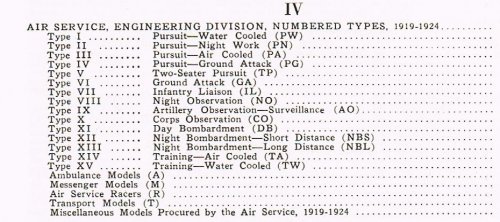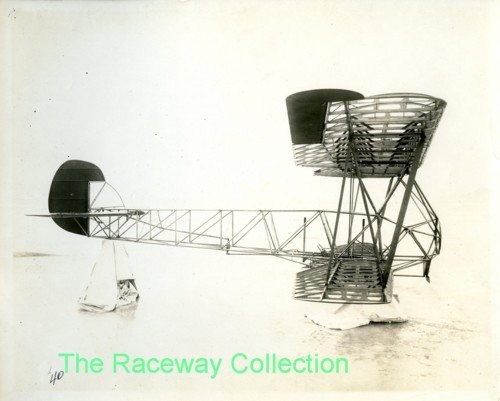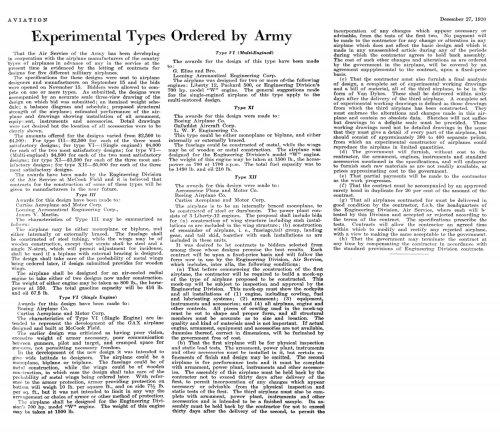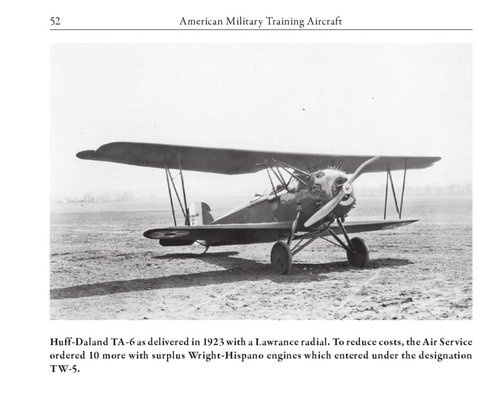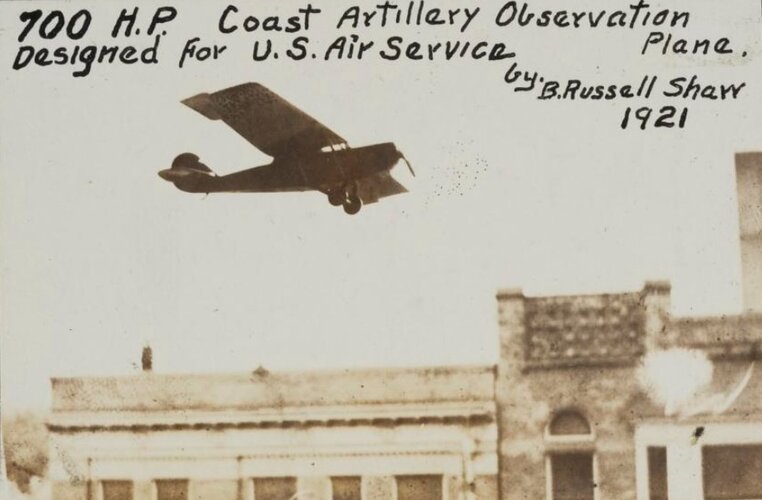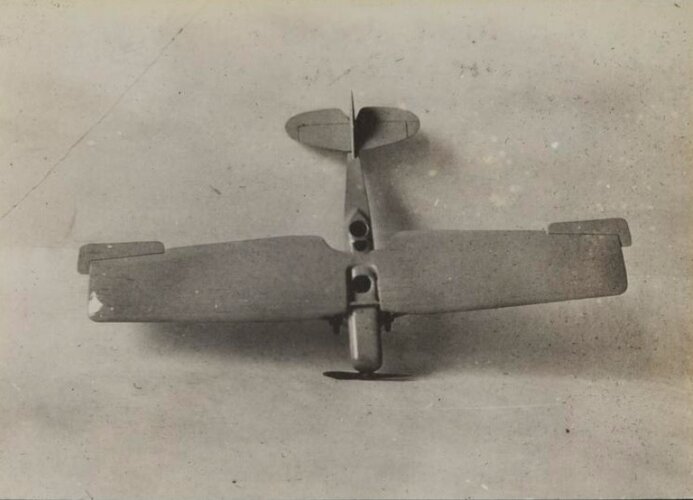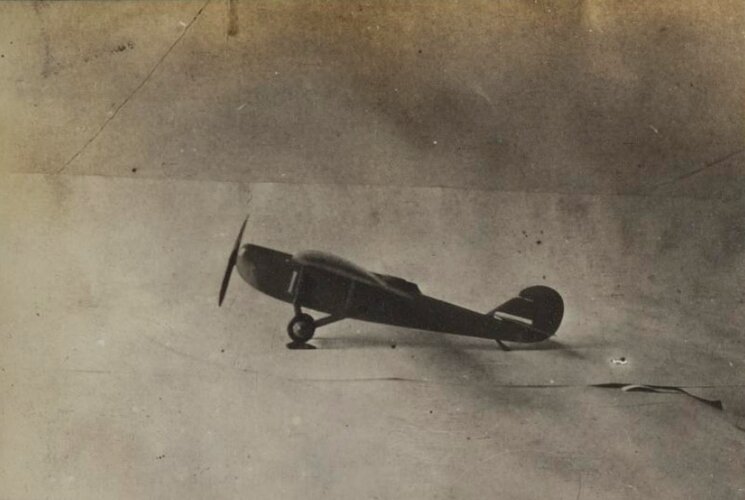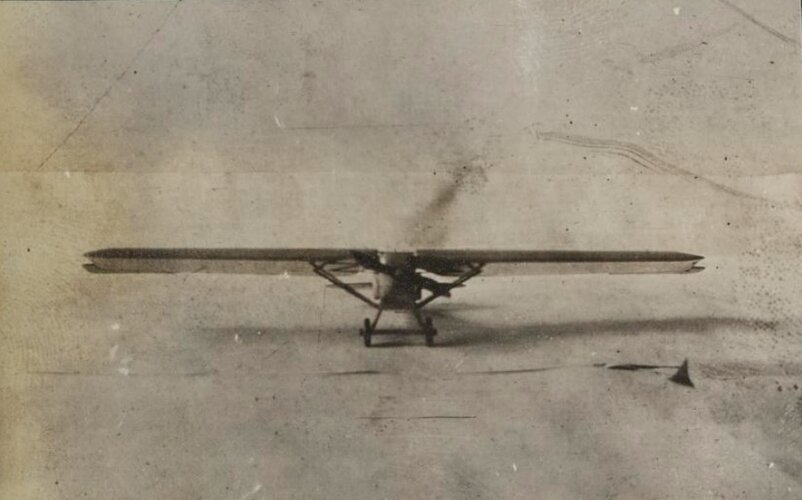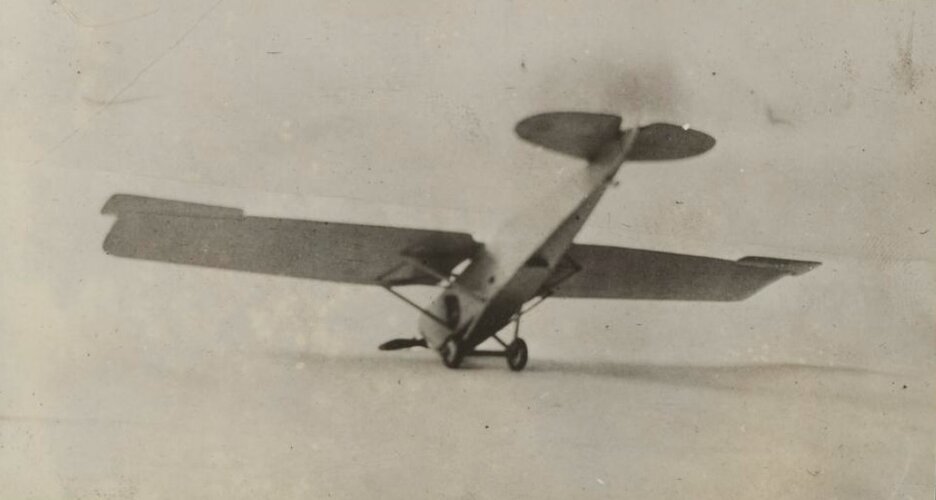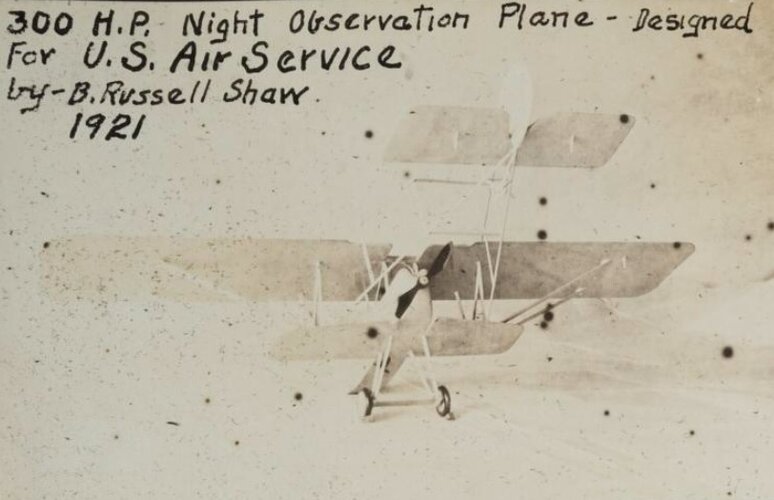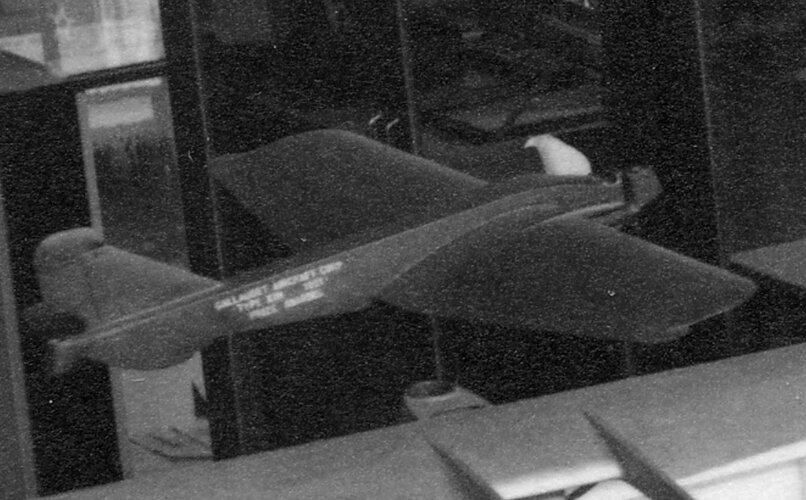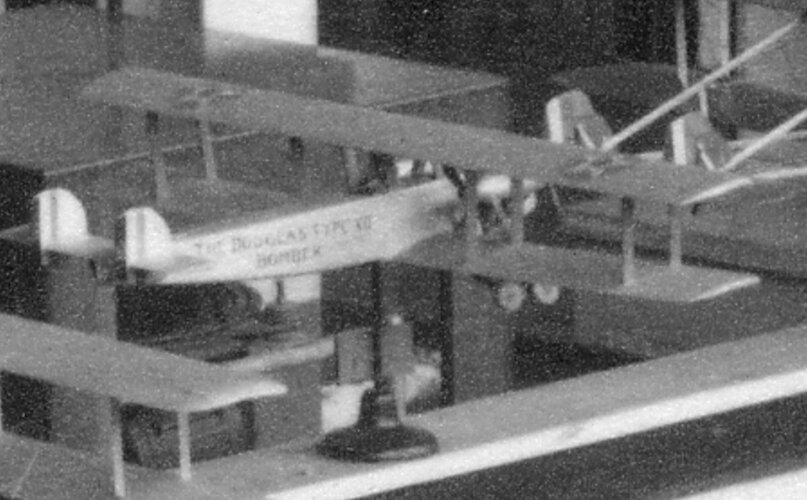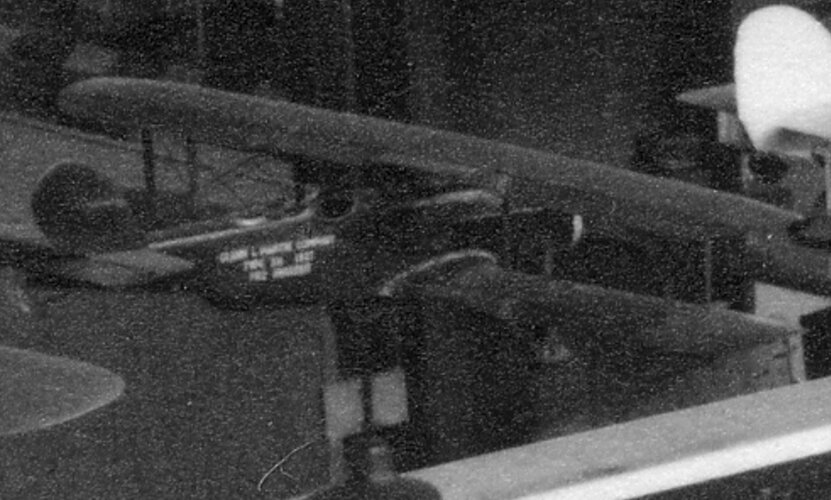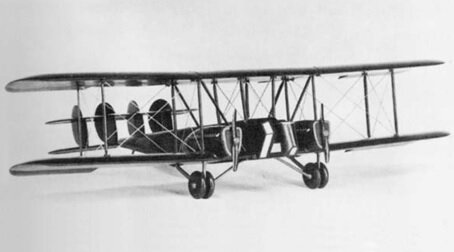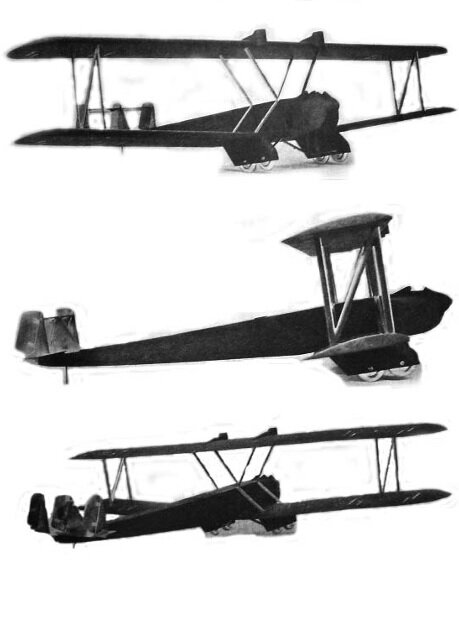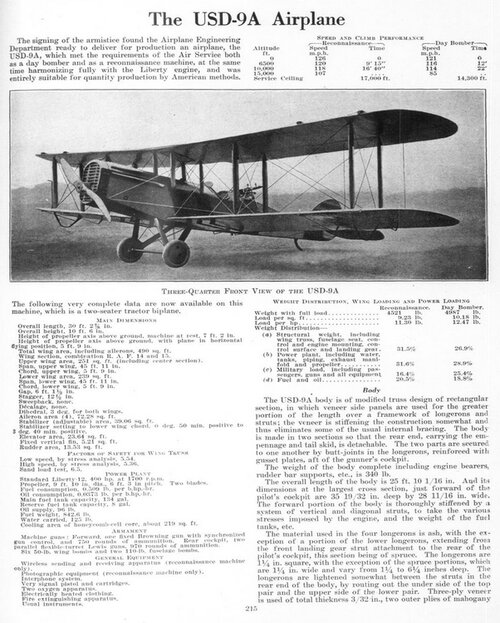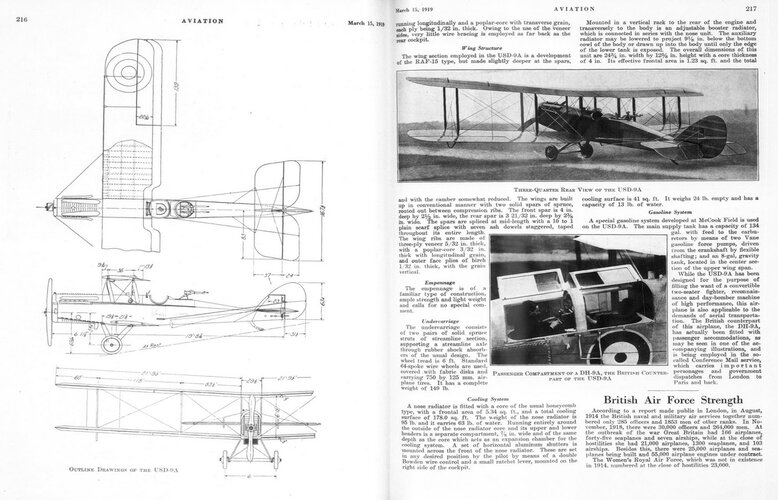- Joined
- 25 June 2009
- Messages
- 14,731
- Reaction score
- 6,069
Excerpt from an official U. S. Army Air Corps Engineering Division document entitled Army Appropriation Bill, 1922, as reproduced in Aviation and Aircraft Journal Vol. 10, 1921 (bold type and color added):
The functions of the Engineering Division, Air Service, can be outlined as follows: To design, develop, and test all airplanes, airplane engines, accessories, and materials to meet the requirements of the Air Service; to prepare production drawings, specifications, and, where necessary, models of all aeronautical equipment for production ; and to assist and supervise the experimental and production manufacture of all aeronautical equipment being designed and constructed for the Air Service by the aeronautical industry.
Work accomplished from July 1919, to July 1920
AIRPLANES
TYPE I. SINGLE-SEATER, PURSUIT
1. Engineering Division, Model VCP-1. — Construction and tests completed and developments and improvements progressing.
2. Thomas-Morse, Model MB-3. — Four experimental airplanes delivered by Thomas-Morse Aircraft Corp., under contract dated June 19, 1920.
3. Ordnance Engineering, Model Orenco D. — Four experimental airplanes, delivered by the Ordnance Engineering Corp., under contract. Tests and necessary improvements and developments completed and incorporated in contract for fifty airplanes, being built by the Curtiss Airplane Corp., under contract dated June 16, 1920.
4. Vought, Model VE-8. — Two experimental airplanes, delivered by the Lewis & Vought Corp., under contract. Tests and development nearly completed.
5. Ordnance Model D-2. — Contract for three experimental airplanes let with the Ordnance Engineering Corp., April 21, 1920. Supervision and inspection of design and construction being maintained.
6. Loening Monoplane, Scout. — Contract for three experimental airplanes let with the Loening Aeronautical Engineering Corporation, April 10, 1920.
Supervision and inspection of design and construction being maintained. All of the above airplanes are powered with Wright 300 hp model H engines.
TYPE II. NIGHT PURSUIT, SINGLE-SEATER
1. Curtiss Model. — Contract for three experimental airplanes let with the Curtiss Airplane and Motors Corp., Feb. 23, 1920. Liberty, 220 hp., 6-cylinder engine used. Supervision and inspection of design and construction being maintained. The preliminary layout and design of this type was prepared by the Engineering Division.
TYPE III. COMBAT PURSUIT, SINGLE-SEATER (AIR-COOLED ENGINE)
Several preliminary layouts of design prepared by the Engineering Division. Experimental construction temporarily suspended until suitable engine is developed.
TYPE IV. ARMORED PURSUIT SINGLE-SEATER
1. Engineering division model GPX. — Preliminary layout and design prepared by Engineering Division. Experimental construction temporarily suspended until Wright 300 horsepower Cannon engine is developed.
TYPE V. TWO-SEATER PURSUIT
1. Engineering division model XB-1A. — Design constructed and tested by Engineering Division and made ready for production. The Wright 300 hp. Model H engine used in this airplane.
TYPE VI. ARMORED GROUND ATTACK THREE-SEATER
1. Engineering division model GAX. — Designed, constructed and tested by Engineering Division. A contract for the production of ten such airplanes was let with the Boeing Airplane Co., June 15, 1920. Two Liberty 400 hp. 12-cylinder engines used in this type.
TYPE VII. ARMORED INFANTRY LIAISON TWO-SEATER
1. Ordnance model E. — Contract for the construction of two experimental airplanes let with Ordnance Engineering Corporation, January 26, 1920. Supervision and inspection of design and construction maintained. One Liberty 400 horsepower 12-cylinder engine used in this type.
2. Lepere model GH-11. — This model with Liberty 400 horsepower 12-cylinder engine being tested and developed.
TYPE VIII. NIGHT OBSERVATION TWO-SEATER
1. Engineering division model XB-1A. — Designed, constructed and tested by Engineering Division and made ready for production.
TYPE IX. ARMY AND COAST ARTILLERY OBSERVATION AND SURVEILLANCE THREE-SEATER
Preliminary study and design made.
TYPE X. CORPS OBSERVATION TWO-SEATER
1. Engineering division model XB-1A. — Designed, constructed and tested by Engineering Division and made ready for production. A contract for the production of forty airplanes let with the Dayton-Wright Airplane Co., June 28, 1920.
2. Empire all-metal model. — Contract for three experimental airplanes let with the Empire Metal Aircraft Corp., June 28, 1919. Supervision and inspection maintained by the engineering division. The first airplane ready for delivery.
3. Lepere U. S. A. O.-11. — Engineering division installed the Moss supercharger in this airplane, resulting in the attainment of remarkable performances.
TYPE XI. DAY BOMBARDMENT
1. Engineering division model U. S. D.-9A. — Developed and ready for production.
TYPE XII. NIGHT BOMBARDMENT (SHORT DISTANCE)
1. Martin bomber. — Designed and constructed by Glenn L. Martin Co. and tested, developed and made ready for production by Engineering division. A contract was let June 9, 1920, for the construction of 20 airplanes of this type by the Glenn L. Martin Co.
TYPE XIII. NIGHT BOMBARDMENT (LONG DISTANCE)
1. Engineering division model Barling. — Designed by engineering division. A contract for the construction of two experimental airplanes of this type was let June 23, 1920, with the Wittemann-Lewis Co. This type uses six Liberty 400 hp. 12-cylinder engines and carries a useful load of approximately 18,000 lb.
TYPE XIV. TRAINING (AIR-COOLED ENGINE)
1. Huff-Daland model. — Contract for the construction of three experimental airplanes let with Huff-Daland Co. June 4, 1920.
2. Elias model. — Contract for construction of three experimental airplanes let with G. Elias & Bros. June 28, 1920.
3. Engineering division model XT-1, XT-2. — Preliminary layout and mocknp made by engineering division. The above types will use the Lawrence 140-horsepower radial air-cooled engine now being developed for the engineering division.
TYPE XV. TRAINING (WATER-COOLED ENGINE)
1. Engineering division model XT-3. — Design and experimental airplanes being built by engineering division. The Liberty 220 hp. 6-cylinder engine used in this type.
2. Vought model VE-7. — This type designed and constructed by Lewis & Vought Airplane Co. and tested, developed and made ready for production by the engineering division.
3. Curtiss JN Models. — Designed and constructed by Curtiss Airplane Co. and tested, developed and made ready for production by the Engineering Division.
TYPE XVI. — SPECIAL HIGH-ALTITUDE ARMY AND COAST SURVEILLANCE
Study and design by Engineering division incorporating Moss superchargers and air-tight compartment features.
MISCELLANEOUS TYPES
1. Engineering Division Model VCP-R. — Engineering Division Model VCP-ROfficial U. S. Government entry in the Gordon Bennett international cup race. The Model VCP-1 modified to take the Packard 550 hp. engine. Speed of 190 m.p.h. anticipated.
2. Engineering Division ambulance. — A DH-4 airplane modified to carry two litters and the pilot and surgeon for emergency transportation by air.
3. Engineering Division messenger. — For dispatch service. Designed by Engineering Division, using Lawrance 3-cylinder 60 hp. engine. Contract let with Lawrence Sperry Aircraft Co., April 14, 1920, for the construction of five experimental airplanes of this type.
4. Miscellaneous. — Exhaustive study and various layouts of airplanes to be constructed of metal.
The functions of the Engineering Division, Air Service, can be outlined as follows: To design, develop, and test all airplanes, airplane engines, accessories, and materials to meet the requirements of the Air Service; to prepare production drawings, specifications, and, where necessary, models of all aeronautical equipment for production ; and to assist and supervise the experimental and production manufacture of all aeronautical equipment being designed and constructed for the Air Service by the aeronautical industry.
Work accomplished from July 1919, to July 1920
AIRPLANES
TYPE I. SINGLE-SEATER, PURSUIT
1. Engineering Division, Model VCP-1. — Construction and tests completed and developments and improvements progressing.
2. Thomas-Morse, Model MB-3. — Four experimental airplanes delivered by Thomas-Morse Aircraft Corp., under contract dated June 19, 1920.
3. Ordnance Engineering, Model Orenco D. — Four experimental airplanes, delivered by the Ordnance Engineering Corp., under contract. Tests and necessary improvements and developments completed and incorporated in contract for fifty airplanes, being built by the Curtiss Airplane Corp., under contract dated June 16, 1920.
4. Vought, Model VE-8. — Two experimental airplanes, delivered by the Lewis & Vought Corp., under contract. Tests and development nearly completed.
5. Ordnance Model D-2. — Contract for three experimental airplanes let with the Ordnance Engineering Corp., April 21, 1920. Supervision and inspection of design and construction being maintained.
6. Loening Monoplane, Scout. — Contract for three experimental airplanes let with the Loening Aeronautical Engineering Corporation, April 10, 1920.
Supervision and inspection of design and construction being maintained. All of the above airplanes are powered with Wright 300 hp model H engines.
TYPE II. NIGHT PURSUIT, SINGLE-SEATER
1. Curtiss Model. — Contract for three experimental airplanes let with the Curtiss Airplane and Motors Corp., Feb. 23, 1920. Liberty, 220 hp., 6-cylinder engine used. Supervision and inspection of design and construction being maintained. The preliminary layout and design of this type was prepared by the Engineering Division.
TYPE III. COMBAT PURSUIT, SINGLE-SEATER (AIR-COOLED ENGINE)
Several preliminary layouts of design prepared by the Engineering Division. Experimental construction temporarily suspended until suitable engine is developed.
TYPE IV. ARMORED PURSUIT SINGLE-SEATER
1. Engineering division model GPX. — Preliminary layout and design prepared by Engineering Division. Experimental construction temporarily suspended until Wright 300 horsepower Cannon engine is developed.
TYPE V. TWO-SEATER PURSUIT
1. Engineering division model XB-1A. — Design constructed and tested by Engineering Division and made ready for production. The Wright 300 hp. Model H engine used in this airplane.
TYPE VI. ARMORED GROUND ATTACK THREE-SEATER
1. Engineering division model GAX. — Designed, constructed and tested by Engineering Division. A contract for the production of ten such airplanes was let with the Boeing Airplane Co., June 15, 1920. Two Liberty 400 hp. 12-cylinder engines used in this type.
TYPE VII. ARMORED INFANTRY LIAISON TWO-SEATER
1. Ordnance model E. — Contract for the construction of two experimental airplanes let with Ordnance Engineering Corporation, January 26, 1920. Supervision and inspection of design and construction maintained. One Liberty 400 horsepower 12-cylinder engine used in this type.
2. Lepere model GH-11. — This model with Liberty 400 horsepower 12-cylinder engine being tested and developed.
TYPE VIII. NIGHT OBSERVATION TWO-SEATER
1. Engineering division model XB-1A. — Designed, constructed and tested by Engineering Division and made ready for production.
TYPE IX. ARMY AND COAST ARTILLERY OBSERVATION AND SURVEILLANCE THREE-SEATER
Preliminary study and design made.
TYPE X. CORPS OBSERVATION TWO-SEATER
1. Engineering division model XB-1A. — Designed, constructed and tested by Engineering Division and made ready for production. A contract for the production of forty airplanes let with the Dayton-Wright Airplane Co., June 28, 1920.
2. Empire all-metal model. — Contract for three experimental airplanes let with the Empire Metal Aircraft Corp., June 28, 1919. Supervision and inspection maintained by the engineering division. The first airplane ready for delivery.
3. Lepere U. S. A. O.-11. — Engineering division installed the Moss supercharger in this airplane, resulting in the attainment of remarkable performances.
TYPE XI. DAY BOMBARDMENT
1. Engineering division model U. S. D.-9A. — Developed and ready for production.
TYPE XII. NIGHT BOMBARDMENT (SHORT DISTANCE)
1. Martin bomber. — Designed and constructed by Glenn L. Martin Co. and tested, developed and made ready for production by Engineering division. A contract was let June 9, 1920, for the construction of 20 airplanes of this type by the Glenn L. Martin Co.
TYPE XIII. NIGHT BOMBARDMENT (LONG DISTANCE)
1. Engineering division model Barling. — Designed by engineering division. A contract for the construction of two experimental airplanes of this type was let June 23, 1920, with the Wittemann-Lewis Co. This type uses six Liberty 400 hp. 12-cylinder engines and carries a useful load of approximately 18,000 lb.
TYPE XIV. TRAINING (AIR-COOLED ENGINE)
1. Huff-Daland model. — Contract for the construction of three experimental airplanes let with Huff-Daland Co. June 4, 1920.
2. Elias model. — Contract for construction of three experimental airplanes let with G. Elias & Bros. June 28, 1920.
3. Engineering division model XT-1, XT-2. — Preliminary layout and mocknp made by engineering division. The above types will use the Lawrence 140-horsepower radial air-cooled engine now being developed for the engineering division.
TYPE XV. TRAINING (WATER-COOLED ENGINE)
1. Engineering division model XT-3. — Design and experimental airplanes being built by engineering division. The Liberty 220 hp. 6-cylinder engine used in this type.
2. Vought model VE-7. — This type designed and constructed by Lewis & Vought Airplane Co. and tested, developed and made ready for production by the engineering division.
3. Curtiss JN Models. — Designed and constructed by Curtiss Airplane Co. and tested, developed and made ready for production by the Engineering Division.
TYPE XVI. — SPECIAL HIGH-ALTITUDE ARMY AND COAST SURVEILLANCE
Study and design by Engineering division incorporating Moss superchargers and air-tight compartment features.
MISCELLANEOUS TYPES
1. Engineering Division Model VCP-R. — Engineering Division Model VCP-ROfficial U. S. Government entry in the Gordon Bennett international cup race. The Model VCP-1 modified to take the Packard 550 hp. engine. Speed of 190 m.p.h. anticipated.
2. Engineering Division ambulance. — A DH-4 airplane modified to carry two litters and the pilot and surgeon for emergency transportation by air.
3. Engineering Division messenger. — For dispatch service. Designed by Engineering Division, using Lawrance 3-cylinder 60 hp. engine. Contract let with Lawrence Sperry Aircraft Co., April 14, 1920, for the construction of five experimental airplanes of this type.
4. Miscellaneous. — Exhaustive study and various layouts of airplanes to be constructed of metal.

